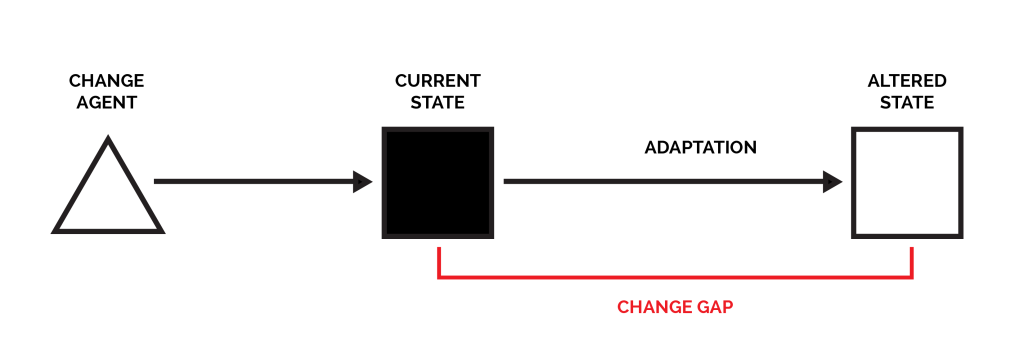W
inston Churchill understood how to change. He served as an army officer, journalist, politician, writer, and ultimately Prime Minister of the United Kingdom. Hell he even changed political parties, crossing the line between conservative to liberal and back again.
But in 1931, his political career appeared over. Throughout the years in office, Churchill had constantly been at odds with his peers, but never shied away from his beliefs. The constant clashes and disagreements, left him with few allies across both parties. So when Ramsay MacDonald created the National Government in 1931, it wasn’t overly surprising that Churchill had been left out in the cold, not even securing a Cabinet invite.
Churchill had been pursuing his political career, ever since he laid his eyes on one in 1899, serving in one form or another over the next 30 years. It was a major part of his identity, which makes what came next even more impressive. Seeing the writing on the wall, Churchill adapted and began a period in his life now known as “the wilderness years”.
During this period, Churchill concentrated on his writing, publishing 11 volumes, writing hundreds of articles, delivering speeches, and finishing several books, including Marlborough: His Life & Times, A History of the English Speaking Peoples, and Great Contemporaries. He became one of the most prolific and successful writers of his time and fully embraced this phase of his life. And it certainly didn’t hurt to keep his voice and ideas relevant in the public eye.
Yet his political and military career were far from over. The day Britain declared war on Germany, following the start of World War II, Churchill was appointed First Lord of Admiralty and joined the War Cabinet. Soon thereafter, after a misstep by the then Prime Minster, Churchill was given the position, pulled back into the fold to serve Britain in their time of need. He was again playing the role that was necessary and gaining vindication along the way.
To improve is to change, so to be perfect is to have changed often.Winston Churchill
The ability to adapt, to change due to extenuating circumstances, is a powerful skill in the 21st century. Things are only moving faster and becoming more uncertain. From an organizational perspective to an individual one, the ability to roll with the punches and even thrive in spite of them becomes invaluable. As such, the ability to adapt becomes ever more important.
To understand how to leverage this skill we first need to better understand how adaptability works. The basic model is composed of four parts: the current state, the change agent, the change gap, and the altered state. The current state is where you are at a specific moment, ideally working at the optimal level for the conditions you are currently facing. That is until a change agent appears. This agent can come from anywhere: nature, technology, humans, governments, and so on. The source matters less than the impact, because the environment has changed meaning that your current state is sub-optimal for the situation.
That is until a change agent appears. This agent can come from anywhere: nature, technology, humans, governments, and so on. The source matters less than the impact, because the environment has changed meaning that your current state is sub-optimal for the situation.
In this case you have 2 options: ignore the change or adapt. Hopefully no one chooses to ignore it, yet we see it all the time. From a business stand point, examples like Borders and Barnes and Noble falling to Amazon or Blockbuster becoming extinct with the rise of Netflix, show just how devastating a lack of change can be.
But it is just as common in individuals. People desire to be better, but that desire doesn’t always translate into action. As Einstein said, “Insanity is doing the same thing over and over and expecting different results.” From professional to personal goals, we often strive to improve, but we don’t change anything. It doesn’t work out so well.
We must adapt to change. Now back to the model.
The change gap is the amount of time and effort required to reach the altered state. Finally, the altered state is the new optimal situation based on what changed. A few things are important here.
First, change is inevitable. There are no best practices, there is nothing that is concrete. The world around us is always changing, shifting, and morphing. As Donald Rumsfeld put it, there are simply things we don’t know:
There are known knowns. These are things we know that we know. There are known unknowns. That is to say, there are things that we know we don’t know. But there are also unknown unknowns. There are things we don’t know we don’t know.
This is just a fact of life. We can’t tell the future, as much as we love to try.
In fact, our ability to forecast the future is severely hindered by our expertise. A study by Philip Tetlock showed that how you think matters more than what you think. Being in a domain means you will be more overconfident in predictions and see things in a certain way. Surprisingly, the study showed that amateurs or generalist are in fact better suited to forecasting trends than an expert would be. This again points to the value of flexibility and keeping an open mind.
Suffice to say, things will change. If we take that as reality, then there is one thing we need to focus on and that is the change gap. Our goal should be to decrease the time and effort it takes to transfer from our current state to an altered state. The smaller the gap, the more nimble and robust we become. This is an idea closely related to that of being antifragile, which is our ability to be robust in the face of adversity. It is to increase in resilience when things go horribly wrong. The better we are at adjusting to change, the less disastrous change becomes. Our robustness increases.
This is an idea closely related to that of being antifragile, which is our ability to be robust in the face of adversity. It is to increase in resilience when things go horribly wrong. The better we are at adjusting to change, the less disastrous change becomes. Our robustness increases.
The key then becomes maximizing our ability to be flexible, to embrace change, and to adapt to the situation. So how do we develop our skill of adaptability?
1. Begin with a clean state.
We often look at things through a very specific lens that colors our perspective. One key to adaptability is to start with a clean slate. To see things from a fresh perspective. This idea is closely related to shoshin or beginner’s mind, where we leave behind our assumptions and beliefs and explore a problem as a beginner.
2. Zoom out.
Along the same lines, we are often too close to a problem to see the answers we need. An important practice is to zoom out and view the bigger picture to understand all the various angles of a situation. The perspective you take can make light of problems and solutions that were otherwise hidden.
3. Experiment on your assumptions.
Finally, an integral part of adaptation is to trying new things and assessing the results. More often than not you will be facing a new challenge and the answer will not be obvious. When this is the case, experimentation is the only solution. Test, measure, learn, and iterate your way to a solution. And remember that failure is just bringing you a step closer to the answer.
The secret of change is to focus all of your energy, not on fighting the old, but on building the new.Socrates
Adapting to change and thriving in complexity requires a new way of operating in the world. It requires you to throw out assumptions, challenge the status quo, and experiment relentlessly, but the payout for such a shift in mindset are amazing.
You don’t just get better at handling adversity and solving problems, but you enjoy the challenges that change brings. In a world where complexity is only increasing, that’s a trait that needs to be developed.
Image via flickr
